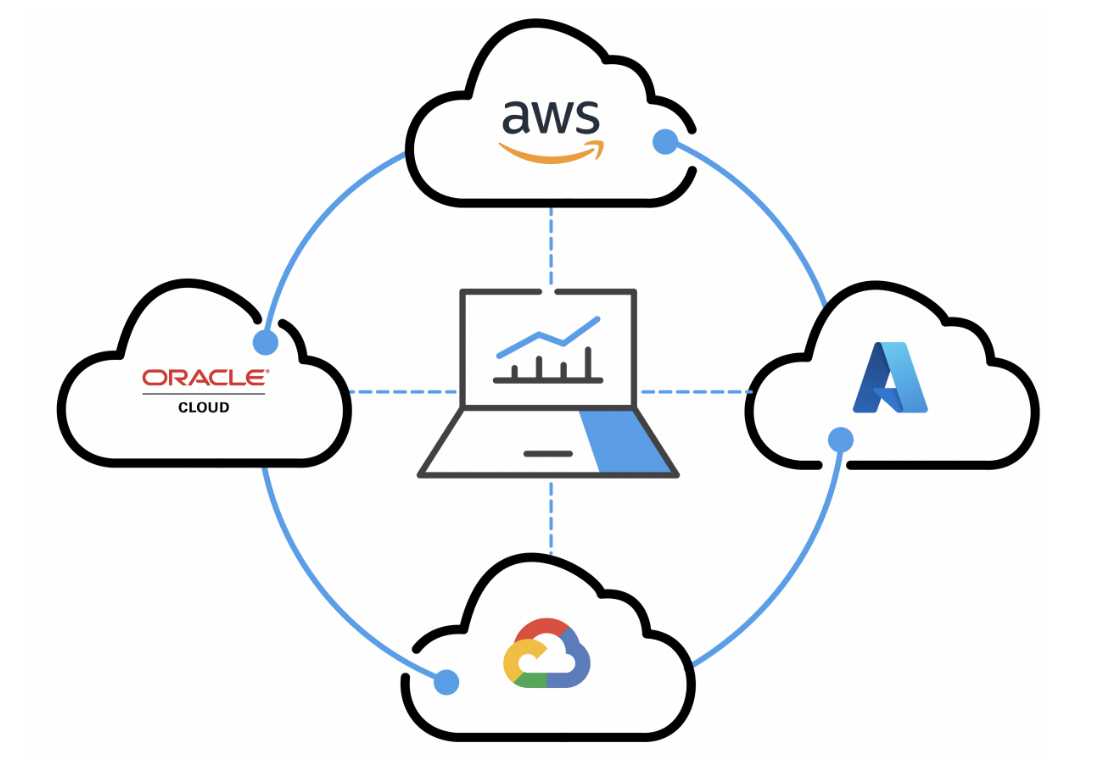Avoiding Vendor Lock-In: Guide to Multi-Cloud Infrastructure
 Ashok Nath
Ashok Nath
Vendor lock-in is a growing concern for organizations relying on a single cloud provider, as it can limit flexibility, increase costs, and make future migrations challenging. With the evolution of cloud technology, companies increasingly look to multi-cloud solutions with providers like AWS, Azure, and Google Cloud Platform (GCP) to achieve greater agility, resilience, and innovation while minimizing the risks of dependency on a single vendor. Here’s an in-depth look at the causes and consequences of vendor lock-in, and how a multi-cloud strategy offers a powerful path forward.
Understanding Vendor Lock-In: Causes and Consequences
What is Vendor Lock-In?
Vendor lock-in refers to a situation where an organization becomes so deeply dependent on a single provider’s infrastructure, tools, and services that switching to another provider becomes impractical or financially prohibitive. While cloud providers offer robust and specialized services, relying on a single vendor can introduce limitations that restrict flexibility and adaptability over time.
Causes of Vendor Lock-In
Proprietary Services and APIs: Cloud providers often create proprietary services (e.g., AWS Lambda, Azure Functions) that simplify application development within their ecosystems. However, these services are unique to each provider, complicating migration or replication on another platform.
Data Gravity: As data grows, it becomes harder and costlier to move, especially with egress fees charged by cloud providers for data transfer. The sheer volume and interdependencies of data can make it challenging to migrate away from a single vendor.
Technical Complexity and Skill Specialization: Organizations often invest heavily in training staff to use specific cloud platforms, making a shift to another provider costly both in time and resources. Specialized skills for each platform can further reinforce dependency.
Pricing Structures and Contracts: Long-term contracts, volume discounts, and unique pricing structures can lock customers into a provider, making it financially difficult to transition without incurring substantial costs.
Effects of Vendor Lock-In
Increased Costs: Without competition, a single cloud provider has more control over pricing, making it hard for clients to negotiate favorable terms over time. Dependency on a sole provider can lead to increased operational expenses.
Reduced Innovation and Agility: Vendor lock-in limits an organization’s ability to quickly adopt new technologies and leverage innovations from other cloud providers, which could hinder digital transformation efforts.
Risk to Continuity and Compliance: A single point of dependency means that any disruption, whether technical or policy-related, can severely impact business operations and potentially violate regulatory or compliance standards.
Leveraging Multi-Cloud to Combat Vendor Lock-In
A multi-cloud strategy, which involves using multiple cloud providers like AWS, Azure, and GCP, offers a viable solution for overcoming the constraints of vendor lock-in. By diversifying infrastructure across providers, organizations gain flexibility, reduce risks, and optimize costs while maintaining the ability to leverage unique offerings from each provider.
Benefits of a Multi-Cloud Approach
Flexibility and Resilience: With workloads distributed across different platforms, organizations can switch services or providers as needed, minimizing dependency on a single provider. This approach fosters resilience and flexibility in adapting to technological or market changes.
Cost Optimization: By balancing workloads across multiple clouds, organizations can take advantage of competitive pricing, allowing for cost savings through strategic allocation. Each provider has unique pricing models, so workloads can be distributed based on cost-effectiveness.
Enhanced Risk Management: Relying on a single cloud provider can introduce risks, especially regarding data privacy, security, or service availability. A multi-cloud strategy enables redundancy, mitigating the impact of potential provider-specific outages or service disruptions.
Access to Best-in-Class Services: Each cloud provider specializes in certain areas, whether it’s machine learning (GCP), data analytics (AWS), or enterprise IT solutions (Azure). A multi-cloud approach lets organizations utilize the best tools from each provider, enhancing innovation.
Implementing a Multi-Cloud Strategy
Implementing a multi-cloud strategy requires careful planning and an understanding of how best to leverage the unique strengths of each provider. Here’s a roadmap to an effective multi-cloud setup:
1. Identify Workload Requirements
- Assess which workloads can benefit from specific providers. For example, AI-heavy workloads might thrive on GCP due to its robust ML tools, while Azure could be ideal for organizations already invested in Microsoft enterprise solutions.
2. Establish Data Governance and Interoperability Standards
- Use tools like Kubernetes and Docker for containerization, enabling applications to run consistently across environments. Leveraging cloud-agnostic tools helps minimize integration issues and ensures that applications remain portable.
3. Implement Data Management Solutions
- Data is central to any multi-cloud strategy. By utilizing multi-cloud data management solutions like Google BigQuery Omni or Azure Arc, organizations can maintain a unified view of data across providers while adhering to compliance standards.
4. Use Cost Optimization Tools
- Multi-cloud management platforms like CloudHealth by VMware or Flexera provide insights into spending across providers, helping organizations track usage and optimize costs. Leveraging these tools enhances cost control and provides visibility across the entire multi-cloud environment.
5. Create Redundancy and Disaster Recovery Plans
- To capitalize on resilience, create failover and backup systems that span multiple providers. Solutions like AWS Outposts or Azure Site Recovery help ensure data and applications remain accessible, regardless of single provider disruptions.
6. Implement Comprehensive Security Protocols
- Security and compliance requirements must be unified across cloud environments. Using multi-cloud security solutions like Palo Alto Networks Prisma or Cisco Cloud Security helps secure workloads across AWS, Azure, and GCP, ensuring that each environment complies with industry standards.
Overcoming Multi-Cloud Challenges
While multi-cloud offers significant advantages, it also introduces complexity. Here’s how to navigate common multi-cloud challenges:
Complex Management: Managing multiple providers can be complex. Utilizing centralized management platforms like HashiCorp Terraform for infrastructure as code (IaC) or Google Anthos for Kubernetes management can streamline processes and reduce operational burden.
Data Synchronization: Ensuring data consistency across clouds can be challenging, especially in real-time applications. Tools like AWS Glue, Azure Data Factory, and GCP Dataflow facilitate efficient data integration across environments.
Compliance Across Regions: Each cloud provider has different compliance standards across regions. Using a unified compliance platform such as ServiceNow or IBM Cloud Pak for Data helps enforce consistent policies across providers.
Summary:
A multi-cloud strategy offers a powerful solution to the problem of vendor lock-in, providing organizations with flexibility, cost efficiency, and enhanced resilience. By distributing workloads across AWS, Azure, and GCP, organizations can leverage the strengths of each provider while avoiding dependency on any single one. However, implementing multi-cloud requires thoughtful planning, robust data management, and comprehensive security measures.
As cloud technology advances, adopting a multi-cloud approach positions organizations to innovate and adapt while mitigating the risks of vendor lock-in. For companies seeking to future-proof their infrastructure and maintain agility, multi-cloud is not just a trend—it’s a strategic imperative.
Subscribe to my newsletter
Read articles from Ashok Nath directly inside your inbox. Subscribe to the newsletter, and don't miss out.
Written by

Ashok Nath
Ashok Nath
I am from Nepal 🇳🇵.